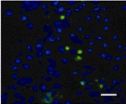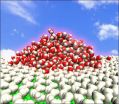(Press-News.org) TORONTO, July 15, 2014 — Rehabilitation programs must become an integral part of cardiac care to significantly reduce the burden of living with heart disease, one of the most common chronic diseases and causes of death globally, according to York University Professor Sherry Grace.
"Cardiac rehabilitation is a cost-effective program offering heart patients exercise, education and risk reduction," says Grace, noting that participation results in 25 per cent less death, lower re-hospitalization rates and better quality of life.
Despite these benefits, cardiac rehabilitation is vastly underused, particularly compared with costly revascularization and medical therapy, according to the review Grace conducted with Karam Turk-Adawi in the Cardiovascular Rehabilitation & Prevention Unit, University Health Network (UHN), and Dr. Nizal Sarrafzadegan, director of Isfahan Cardiovascular Research Center at Isfahan University of Medical Sciences in Iran.
"Cardiac rehabilitation services are insufficiently implemented, with only 39 per cent of countries providing any," says Grace.
Heart disease has become an epidemic in low-income and middle-income countries (LMICs), and cardiac rehab can reduce the socio-economic impact of the disease by promoting return to work and reducing premature mortality, notes to Grace, who is also the director of research at the GoodLife Fitness Cardiovascular Rehabilitation Unit at the UHN.
"If supportive health policies, funding, physician referral strategies and alternative delivery modes are implemented, we could reduce the ratio from one cardiac rehab program per 6.4 million inhabitants in a middle income country like Paraguay, to the one program per 102,000 available in the US, a high income country," adds Grace.
Low-income countries such as Afghanistan, Bangladesh and Kenya have one rehab program each for their entire population.
The article, Global availability of cardiac rehabilitation, published online at Nature Reviews Cardiology, indicates that while 68 per cent of high-income countries have cardiac rehabilitation, only 23 per cent of LMICs do, despite the fact that 80 per cent of deaths from heart disease occur in these countries.
INFORMATION:
NOTE: Please note that the complete article is available upon request.
York University is helping to shape the global thinkers and thinking that will define tomorrow. York's unwavering commitment to excellence reflects a rich diversity of perspectives and a strong sense of social responsibility that sets us apart. A York U degree empowers graduates to thrive in the world and achieve their life goals through a rigorous academic foundation balanced by real-world experiential education. As a globally recognized research centre, York is fully engaged in the critical discussions that lead to innovative solutions to the most pressing local and global social challenges. York's 11 faculties and 27 research centres are thinking bigger, broader and more globally, partnering with 288 leading universities worldwide. York's community is strong − 55,000 students, 7,000 faculty and staff, and more than 250,000 alumni.
Media Contact:
Gloria Suhasini, York University Media Relations, 416 736 2100 ext. 22094, suhasini@yorku.ca
York U media studio is available for double-ended broadcast interviews.
Cardiac patients underserved globally due to lack of rehab programs: York University researcher
Rehabilitation programs must become an integral part of cardiac care to significantly reduce the burden of living with heart disease, one of the most common chronic diseases and causes of death globally, according to York University Professor Sherry Grace
2014-07-15
ELSE PRESS RELEASES FROM THIS DATE:
Neuropeptide Y protects cerebral cortical neurons
2014-07-15
Neuropeptide Y exhibits neuroprotective effects. Whether the neuroprotective effects are mediated by the pathways including regulating the immunological activity of reactive microglia and reducing cytokines remains unclear. Prof. Wenqing Zhao, Graduate School, Heibei Medical University, China and his team confirmed that neuropeptide Y prevented excessive production of interleukin-1β and tumor necrosis factor-α by inhibiting microglial reactivity, reduced N-methyl-D-aspartate current in rat cortical neurons, preventing excitotoxicity, and thereby protecting neurons. ...
Hippocampal neuron-related factor expression and neuronal injury after TBI
2014-07-15
Traumatic brain injury (TBI) causes gene expression changes in different brain regions. Cyclooxygenase-2, glutamate receptor-2, and platelet activating factor receptor expression levels are related to the occurrence and development of TBI. However, the precise relationship between the expression levels of these three factors and neuronal injury after TBI remains poorly understood. Zhiqiang Li, Inner Mongolia Corps Hospital, Chinese People's Armed Police Forces, China performed a study and showed that sequential expression of cyclooxygenase-2, glutamate receptor-2, and platelet ...
Signaling pathway for ginsenoside Rb1 promoting hippocampal neuronal neurite outgrowth
2014-07-15
The main pathological changes of Alzheimer's disease (AD) include amyloid-beta protein-induced hippocampal neuronal injury and neurite outgrowth impairment. Phosphatidylinositol 3-kinase (PI3K)/Akt pathway and mitogen-activated protein kinase (MAPK) pathway are the important signaling pathways respectively responsible for regulating synaptic plasticity and neuronal survival. In view of the fact that ginsenoside Rb1 exhibits anti-aging and anti-dementia effects, Prof. Qionglan Yuan and her team, Department of Anatomy & Neurobiology, Tongji University School of Medicine, ...
The ADC does not reflect cytotoxic edema on the uninjured side after TBI
2014-07-15
It is currently difficult to treat traumatic brain injury (TBI) in the clinic. There are abundant neural network connections and humoral regulation mechanisms between the cerebral hemispheres. Brain tissue on the uninjured side after TBI may also undergo abnormal changes, but these changes remain poorly understood. Hong Lu and her team, Affiliated Haikou Hospital, Xiangya School of Medicine, Central South University, in China performed a study to investigate whether apparent diffusion coefficient (ADC) measurements can reflect cytotoxic edema on the uninjured side using ...
Protective effect of α-synuclein knockdown on dopaminergic neurons
2014-07-15
The over-expression of α-synuclein is a major factor in the death of dopaminergic neurons in a methamphetamine-induced model of Parkinson's disease (PD). Dr. Huijun Wang, School of Basic Medical Sciences, Southern Medical University, China and his team injected α-synuclein-shRNA lentivirus stereotaxically into the right striatum of experimental rats to inhibit α-synuclein mRNA and protein expression. Results showed that after α-synuclein knockdown, the depression manifestations of PD rats were reduced, striatal dopamine and tyrosine hydroxylase levels ...
Shanghai scientists challenge classical phenomenon that water always completely wets water
2014-07-15
The molecular scale behavior of water at a solid/liquid interface holds fundamental significance in a diverse set of technical and scientific contexts, ranging from the efficiency of oil mining to the activity of biological molecules. Recently, it has become recognized that both the physical interactions and the surface morphology have significant impact on the behavior of interfacial water, including the water structures and wetting properties of the surface.
In a new review, Chunlei Wang, Yizhou Yang and Haiping Fang of the Shanghai Institute of Applied Physics report ...
SWI assesses signal strength in different brain regions after acute hemorrhagic anemia
2014-07-15
Acute hemorrhagic anemia can decrease blood flow and oxygen supply to brain, and affect its physiological function. Detecting changes in brain function in patients with acute hemorrhagic anemia is helpful for preventing neurological complications and evaluating therapeutic effects. Susceptibility-weighted imaging (SWI) imaging is a novel, non-invasive method for detecting changes in cerebral oxygen levels that may provide more detailed information regarding cerebral blood flow in patients with hemorrhage. Dr. Jun Xia, Second People's Hospital of Shenzhen City, First Affiliated ...
Taking B vitamins won't prevent Alzheimer's disease
2014-07-15
Taking B vitamins doesn't slow mental decline as we age, nor is it likely to prevent Alzheimer's disease, conclude Oxford University researchers who have assembled all the best clinical trial data involving 22,000 people to offer a final answer on this debate.
High levels in the blood of a compound called homocysteine have been found in people with Alzheimer's disease, and people with higher levels of homocysteine have been shown to be at increased risk of Alzheimer's disease. Taking folic acid and vitamin B-12 are known to lower levels of homocysteine in the body, so ...
How strongly does tissue decelerate the therapeutic heavy ion beam?
2014-07-15
Irradiation with heavy ions is suitable in particular for patients suffering from cancer with tumours which are difficult to access, for example in the brain. These particles hardly damage the penetrated tissue, but can be used in such a way that they deliver their maximum energy only directly at the target: the tumour. Research in this relatively new therapy method is focussed again and again on the exact dosing: how must the radiation parameters be set in order to destroy the cancerous cells "on the spot" with as low a damage as possible to the surrounding tissue? The ...
New hope for treatment of Alzheimer's disease
2014-07-15
Montreal, July 15 2014 - Judes Poirier, PhD, C.Q., from the Douglas Mental Health Institute and McGill University in Montréal (Canada) and his team have discovered that a relatively frequent genetic variant actually conveys significant protection against the common form of Alzheimer's disease and can delay the onset of the disease by as much as 4 years. This discovery opens new avenues for treatment against this devastating disease.
Dr. Poirier announced his findings as the annual Alzheimer's Association International Conference was taking place in Copenhagen. This large-scale ...
LAST 30 PRESS RELEASES:
Making lighter work of calculating fluid and heat flow
Normalizing blood sugar can halve heart attack risk
Lowering blood sugar cuts heart attack risk in people with prediabetes
Study links genetic variants to risk of blinding eye disease in premature infants
Non-opioid ‘pain sponge’ therapy halts cartilage degeneration and relieves chronic pain
AI can pick up cultural values by mimicking how kids learn
China’s ecological redlines offer fast track to 30 x 30 global conservation goal
Invisible indoor threats: emerging household contaminants and their growing risks to human health
Adding antibody treatment to chemo boosts outcomes for children with rare cancer
Germline pathogenic variants among women without a history of breast cancer
Tanning beds triple melanoma risk, potentially causing broad DNA damage
Unique bond identified as key to viral infection speed
Indoor tanning makes youthful skin much older on a genetic level
Mouse model sheds new light on the causes and potential solutions to human GI problems linked to muscular dystrophy
The Journal of Nuclear Medicine ahead-of-print tip sheet: December 12, 2025
Smarter tools for peering into the microscopic world
Applications open for funding to conduct research in the Kinsey Institute archives
Global measure underestimates the severity of food insecurity
Child survivors of critical illness are missing out on timely follow up care
Risk-based vs annual breast cancer screening / the WISDOM randomized clinical trial
University of Toronto launches Electric Vehicle Innovation Ontario to accelerate advanced EV technologies and build Canada’s innovation advantage
Early relapse predicts poor outcomes in aggressive blood cancer
American College of Lifestyle Medicine applauds two CMS models aligned with lifestyle medicine practice and reimbursement
Clinical trial finds cannabis use not a barrier to quitting nicotine vaping
Supplemental nutrition assistance program policies and food insecurity
Switching immune cells to “night mode” could limit damage after a heart attack, study suggests
URI-based Global RIghts Project report spotlights continued troubling trends in worldwide inhumane treatment
Neutrophils are less aggressive at night, explaining why nighttime heart attacks cause less damage than daytime events
Menopausal hormone therapy may not pose breast cancer risk for women with BRCA mutations
Mobile health tool may improve quality of life for adolescent and young adult breast cancer survivors
[Press-News.org] Cardiac patients underserved globally due to lack of rehab programs: York University researcherRehabilitation programs must become an integral part of cardiac care to significantly reduce the burden of living with heart disease, one of the most common chronic diseases and causes of death globally, according to York University Professor Sherry Grace






